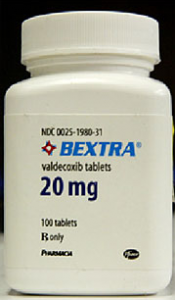The article about Pediatric Associates in CA has a nugget with a potentially outsized impact: the implication that VFC vaccines…
News 9/3/09
From: Curious George “Re: OSHA. I hear that hospitals are definitely on their toes in case an OSHA inspector drops in for a chat. Do you have any information on how many physician clinics are being targeted by OSHA? Have you heard of anyone who has and what their top five non-compliant issues were? I’d like to hear from practice managers what they are doing with regards to OSHA and how many have actually ever been audited, and what your take on this is. How serious is the threat of inspections are in our business because the articles I read were way beyond that book of MSDS pages most of us have stuck somewhere, but rarely update – not to mention all the other issues we could be hit with during a visit.” I’m glad to some asking around. In the meantime, I’d also like to hear from any practice managers (or doctors or consultants) who have opinions on this.
Patient-centered medical home models provide patients better primary care, without adding additional costs. Medical home patients had 29% fewer ER visits and 11% fewer hospitalizations than patients utilizing services in a traditional primary care environment. Group Health Cooperative conducted the one-year study and found that providers relied heavily on e-mail and made the most of technology, including EMRs. Providers also reported burn-out rates 20% lower than the control group.
Time magazine also took a look at the growth of retail clinics and says these practices “are rapidly becoming to the health-care industry what Fotomat was to the camera world.” The Fotomat analogy is particularly interesting given that Fotomat closed its online presence just this week. Of course, the cute little drive-up kiosks closed several years ago as Fotomat’s one-day photo developing service became obsolete with the advent of one-hour photo processing, then digital photography. Which all leads me to wonder if the growth of telemedicine will one day make retail clinics obsolete.
ZirMed introduces a new package that includes eligibility verification, claims management, and electronic remittance, targeting smaller practices with its new ZirMed One product, which essentially bundles three stand-alone products into one.
athenahealth’s Maine Operation Center is named one of the 2009 Best Places to Work in Maine.
Delaware’s Board of Medical Practice sets the maximum rates for copying patient medical records at $2 per page for the first 10 pages. The maximum per page fee declines based on volume and 50 cents is maximum per-page fee after the first 60. Though the costs are currently for both paper and electronic records, the board is considering lowering the fees for electronic records.
Pfizer agrees to pay the government a whopping $2.3 billion to settle a healthcare fraud case. Pfizer was accused of fraudulently marketing the anti-inflammatory drug Bextra and illegally promoting other drugs. It’s the Justice Department’s largest healthcare fraud settlement ever.
Atlanta Women’s Specialists puts out a press release about the benefits of its EMR system, which includes increased staff efficiency and safer care. The practice posts and flags abnormal test results within 24 hour, sends prenatal records directly to the hospital, and exchanges information with other medical practices via the Medicity Novo Grid. The practice will soon deploy smart phones as well.
We are looking for some guest columnists to share their knowledge on HIT in the ambulatory world. In particular, we’d love a clinician who is willing to share his/her EMR journey. If that’s not your thing, but you have other relevant insights to share, let send over an e-mail.
AHRQ plans to collect data from phyicians and pharmacies to identify what accelerates and what hinders the adoption of e-prescribing. The two year study will include interviews physicians, administrators, and pharmacists across 110 different organizations in order to determine what real or perceived barriers can be obstacles for physician practice and pharmacies.
Bridge Community Health Clinic (WI) partners with Healthport to implement practice management, EMR, and RCM solutions. Bridge is an FQHC serving 21,000 patients a year across three locations.




Re: Medical Homes. In reading the referenced article, it says that participating physicians were responsible for fewer patients than those in the control group (1,800 instead of 2,300.) Office visits were longer and more staff was required. With the current shortage of primary care physicians, who is going to take care of those other 500 patients? How many struggling, small primary care clinics can afford more staff? While the model sounds great in theory, I have my doubts that it will work in those areas that are already underserved and understaffed.